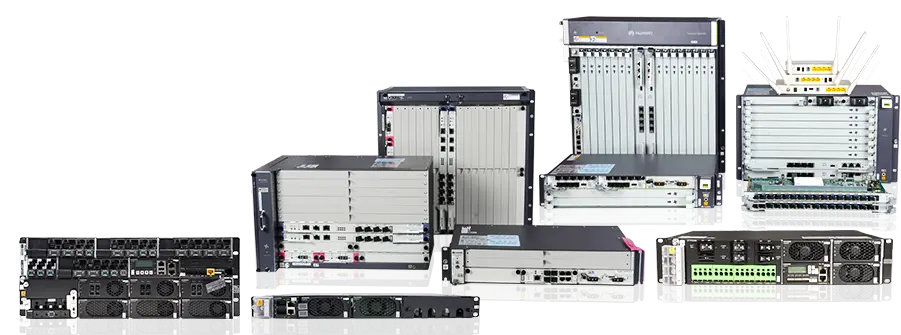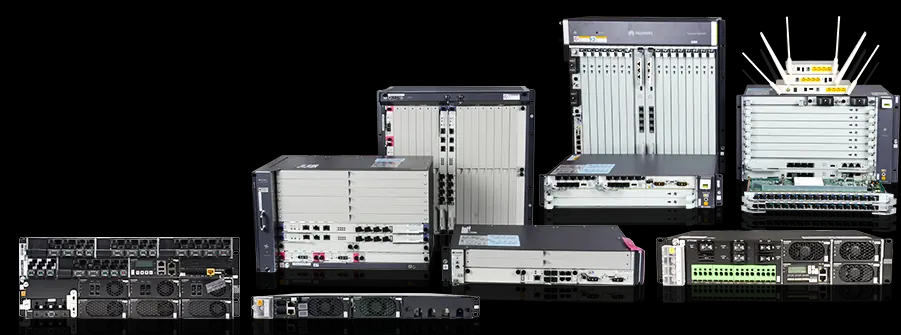Switch stacking is a cornerstone of modern network design, enabling simplified management, improved redundancy, and scalable bandwidth. Huawei’s stacking technology (e.g., iStack and CSS) allows multiple physical switches to operate as a single logical device. However, improper configuration or oversight can lead to instability. This guide dives into best practices for deploying Huawei switch stacks and provides actionable troubleshooting steps for common issues.

1. Huawei Stacking Fundamentals
-
What is Stacking?
Multiple switches are interconnected via stack cables (e.g., Huawei’s Stack Port Modules or 10G/25G ports) to form a unified system with:-
A single IP address for management.
-
Synchronized configurations.
-
Cross-device link aggregation (e.g., Eth-Trunk).
-
-
Key Components:
-
Master Switch: Manages the stack and configures all members.
-
Standby Switch: Takes over if the master fails (CSS supports 1:N redundancy).
-
Member Switches: Operate under the master’s control.
-
-
Topology Options:
-
Chain: Simple but risky (single point of failure).
-
Ring: Recommended for redundancy (dual-link paths).
-
2. Pre-Stacking Checklist
Ensure these prerequisites are met before configuration:
-
Hardware Compatibility:
-
Verify switch models support stacking (e.g., S5700, S6700, CE8800 series).
-
Use certified stack cables (e.g., Huawei QSFP-40G-Stack for CSS).
-
-
Software Requirements:
-
Uniform VRP (Versatile Routing Platform) version across all switches.
-
Enable stacking licenses if required.
-
-
Physical Connections:
-
For ring topology, connect switches in a closed loop.
-
Prioritize dedicated stack ports over regular uplink ports.
-
3. Configuration Best Practices
Step 1: Initialize Stack Settings
<Huawei> system-view
[Huawei] stack
[Huawei-stack] stack member 1 # Assign member ID (1-9 for iStack, 1-2 for CSS)
[Huawei-stack] stack priority 200 # Higher priority increases master election chance
[Huawei-stack] commit -
Critical Tip: Always set member IDs and priorities before connecting stack cables.
Step 2: Configure Stack Ports
[Huawei] interface stack-port 0/1 # Assign physical ports to logical stack-port
[Huawei-stack-port0/1] port member-group interface 10GigabitEthernet 1/0/1
[Huawei-stack-port0/1] port member-group interface 10GigabitEthernet 1/0/2 -
Use bidirectional links for redundancy.
Step 3: Verify Stack Status
<Huawei> display stack # Check member roles, topology, and synchronization status
<Huawei> display stack configuration # Validate pending changes Step 4: Firmware and Configuration Sync
-
Ensure auto-upgrade is enabled to synchronize firmware across members.
-
Use
save allto back up configurations to all switches.
4. Top Troubleshooting Scenarios
Issue 1: Stack Fails to Form
-
Symptoms: Members show “Offline” status.
-
Root Causes:
-
Mismatched firmware versions.
-
Incorrect stack port assignments.
-
Broken or incompatible cables.
-
-
Solutions:
-
Verify VRP versions with
display version. -
Check physical connections and replace faulty cables.
-
Reset member IDs and reboot switches.
-
Issue 2: Split-Brain Scenario
-
Symptoms: Multiple masters detected, causing network loops.
-
Root Causes:
-
Stack cable disconnection in ring topology.
-
Master election priority conflicts.
-
-
Solutions:
-
Inspect stack cables and restore ring integrity.
-
Adjust priorities to ensure a clear master/standby hierarchy.
-
Issue 3: Configuration Sync Failure
-
Symptoms: Members have inconsistent settings.
-
Root Causes:
-
Manual configuration on non-master switches.
-
Insufficient stack bandwidth for sync traffic.
-
-
Solutions:
-
Always configure via the master switch.
-
Allocate dedicated high-speed ports for stacking.
-
Issue 4: Performance Degradation
-
Symptoms: High CPU/memory usage on master switch.
-
Root Causes:
-
Excessive traffic routed through the master.
-
Suboptimal Eth-Trunk load balancing.
-
-
Solutions:
-
Enable cross-member link aggregation (e.g.,
lacp force-forward). -
Distribute traffic using hash algorithms (e.g., src-dst-ip).
-
5. Advanced Tips for Stability
-
Preemptive Maintenance:
-
Schedule
reboot slaveduring maintenance windows to test failover. -
Monitor stack health via SNMP traps (e.g., Huawei eSight).
-
-
Mixed Stacking (Proceed with Caution):
-
Some models support mixing different switches (e.g., S5735 with S6720), but verify compatibility matrices.
-
-
Disaster Recovery:
-
Backup configurations to an external server using
ftportftp.
-
6. Huawei-Specific Commands Quick Reference
| Command | Purpose |
|---|---|
display stack |
Show member status and topology |
stack member *id* priority *x* |
Adjust master election priority |
reset stack configuration |
Clear stack settings (use with caution!) |
display interface stack-port |
Diagnose stack port errors |
Conclusion
Mastering Huawei switch stacking requires meticulous planning, adherence to best practices, and proactive troubleshooting. By leveraging ring topologies, uniform firmware, and rigorous pre-configuration checks, you can build resilient stacks that simplify network operations and scale effortlessly. Always validate configurations in a lab environment before production deployment, and stay updated with Huawei’s latest VRP releases to unlock new stacking capabilities.


Comments are closed